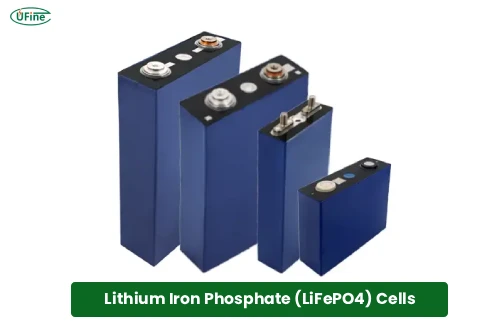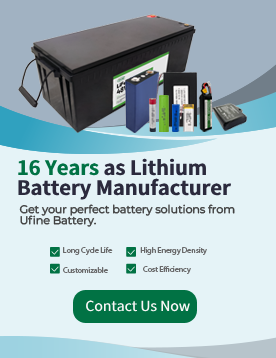
- Part 1. What is a rechargeable lithium cell?
- Part 2. Lithium cell chemistry
- Part 3. Voltage and discharge characteristics
- Part 4. Capacity and energy storage
- Part 5. Shapes and types of lithium cells
- Part 6. Rechargeable lithium cell chargers
- Part 7. Price and cost considerations
- Part 8. Safety and handling
- Part 9. Applications of rechargeable lithium cells
- Part 10. Tips for choosing the right lithium cell
- Part 11. FAQs
Whether you are a hobbyist, a professional, or a manufacturer, understanding the fundamentals of rechargeable lithium cells—including chemistry, voltage, capacity, shapes, charging methods, and price—is essential for making informed choices.
In this article, we will explore all these topics in detail, including practical tips on selecting and maintaining lithium cells.
Part 1. What is a rechargeable lithium cell?
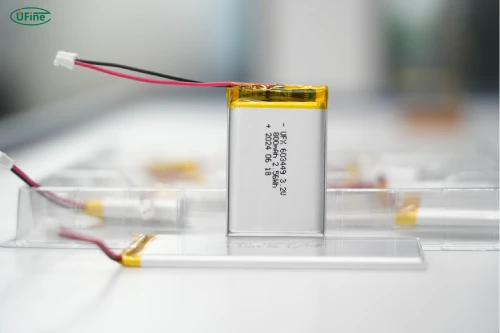
A rechargeable lithium cell is a single electrochemical unit that stores energy and can be recharged multiple times. Unlike disposable batteries, rechargeable lithium cells maintain consistent voltage output over many cycles, providing stable performance for devices.
Key advantages of rechargeable lithium cells include:
- High energy density (more power in smaller size)
- Long cycle life (500–3,000+ charge cycles depending on type)
- Low self-discharge rate
- Lightweight and compact design
A rechargeable lithium cell differs from a battery pack, which consists of multiple cells connected in series or parallel to achieve higher voltage or capacity. Many devices, such as laptops, electric scooters, and power tools, rely on packs built from individual lithium cells.
Part 2. Lithium cell chemistry
Lithium cells come in several chemistries, each with unique performance characteristics. Understanding these differences helps you choose the right battery for your device.
Lithium-Ion (Li-ion)
- The most common type for consumer electronics.
- High energy density and moderate cycle life (500–1,000 cycles).
- Commonly used in laptops, smartphones, and cameras.
Lithium Polymer (LiPo)
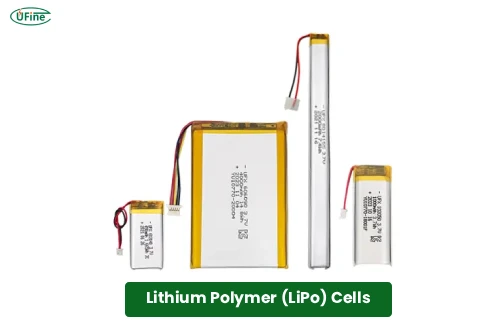
- Uses a gel-like polymer electrolyte.
- Lightweight and flexible form factor.
- Popular in drones, RC vehicles, and wearables.
- Offers high discharge rates suitable for high-performance applications.
Lithium Iron Phosphate (LiFePO4)
- Excellent thermal and chemical stability.
- Long cycle life (up to 3,000 cycles).
- Slightly lower energy density but safer and ideal for electric scooters, solar storage, and EVs.
⚡ Ufine Battery specializes in all three chemistries and can customize lithium cells for unique applications, including high-temperature, low-temperature, and high-rate scenarios. Contact us to design a battery that fits your device’s exact specifications.
Part 3. Voltage and discharge characteristics
A lithium cell’s nominal voltage and discharge characteristics are essential for compatibility and safety.
| Chemistry | Nominal Voltage | Fully Charged Voltage | Safe Discharge Voltage |
|---|---|---|---|
| Li-ion | 3.6–3.7V | 4.2V | 2.5–3.0V |
| LiPo | 3.7V | 4.2V | 3.0V |
| LiFePO4 | 3.2V | 3.6–3.65V | 2.0V |
Key points:
- Exceeding fully charged voltage risks overheating or fire.
- Over-discharging below safe limits can damage the cell and shorten its lifespan.
- Most lithium cells include protection circuits in packs to prevent overcharge, over-discharge, and short circuits.
🔋 Pro Tip: Ufine Battery provides pre-protected lithium cells and packs with built-in circuits to ensure safe operation for both industrial and consumer applications.
Part 4. Capacity and energy storage
Battery capacity indicates how much charge a cell can store and is usually measured in mAh (milliamp-hours) or Ah (amp-hours).
- Higher capacity → longer device runtime
- Lower capacity → smaller size and lighter weight
Energy in watt-hours (Wh) is calculated as:
Energy (Wh)=Capacity (Ah)×Voltage (V)
For example: a 3.7V, 2,500mAh Li-ion cell stores:
2.5Ah×3.7V=9.25Wh
Factors affecting effective capacity include:
- Temperature: Cold reduces available energy
- Load: High discharge currents may reduce usable capacity
- Age: Cycle degradation lowers capacity over time
⚙️ Ufine Battery can customize lithium cells with varying capacities and discharge rates, ensuring optimal energy delivery for your application, whether it’s a high-rate power tool or a low-drain wearable device.
Part 5. Shapes and types of lithium cells
Lithium cells come in different physical forms, each suited to specific applications:
1. Cylindrical Cells
- Common sizes: 18650, 21700, 26650.
- Advantages: High mechanical stability, easy to assemble into packs.
- Applications: Laptops, electric scooters, power tools, EV battery packs.
2. Prismatic Cells
- Rectangular shape, often encased in a metal shell.
- Pros: Efficient space utilization, easy integration into packs.
- Applications: Smartphones, tablets, and slim devices.
3. Pouch Cells (LiPo)
- Flexible, lightweight, and ultra-thin.
- Pros: Customizable dimensions, high power output.
- Applications: Drones, RC vehicles, wearable electronics.
⚡ Ufine Battery offers cylindrical, prismatic, pouch, ultra-thin, and custom-shaped lithium cells to meet unique form factor requirements. Contact us to design the perfect battery for your project.
Part 6. Rechargeable lithium cell chargers
Charging methods are critical for safety and performance:
- CC-CV Chargers (Constant Current – Constant Voltage): Standard for most lithium cells.
- Smart Chargers: Monitor temperature, voltage, and charge state to prevent overcharging.
- Balance Chargers: For multi-cell packs, ensuring all cells are evenly charged.
Charging considerations:
- Charge rate (C-rate) should match manufacturer specifications.
- Avoid fast charging beyond recommended limits unless supported.
- Use chargers compatible with the battery chemistry (Li-ion, LiPo, LiFePO4).
Part 7. Price and cost considerations
The cost of lithium cells varies based on chemistry, capacity, brand, and protection features:
Battery TypeTypical Price Range (USD)NotesLi-ion 18650$3–$8Standard consumer-gradeLiPo$5–$15High-rate, flexible form factorLiFePO4$8–$20Long life, safer chemistryCustom PacksVariesDesigned for specific voltage/capacity
Cost factors:
- Protected vs. unprotected cells
- High-temperature or low-temperature rated cells
- High discharge-rate or high-capacity variants
Part 8. Safety and handling
Lithium cells are generally safe when handled properly, but misuse can be hazardous:
- Do not puncture, crush, or short-circuit the cells.
- Avoid exposing cells to temperatures above 60°C or below -20°C.
- Always store partially charged for long-term storage (around 40–60% for Li-ion).
- Use certified chargers and follow manufacturer guidelines.
Part 9. Applications of rechargeable lithium cells
Rechargeable lithium cells power a wide array of devices:
- Consumer electronics: Smartphones, laptops, tablets
- Electric vehicles: Scooters, e-bikes, EVs
- Energy storage systems: Solar or backup storage
- Power tools: Drills, saws, and other high-drain devices
- Hobby and recreational devices: Drones, RC cars, wearable electronics
Part 10. Tips for choosing the right lithium cell
- Match voltage and capacity to your device requirements
- Consider cycle life and expected lifespan
- Choose the appropriate chemistry based on performance and safety needs
- Decide between single cells or custom packs
- Purchase from reputable manufacturers, like Ufine Battery, to ensure quality and reliability
Part 11. FAQs
What is the difference between Li-ion, LiPo, and LiFePO4 cells?
Li-ion has high energy density for consumer electronics, LiPo is lightweight and flexible for high-rate applications, and LiFePO4 offers superior safety and long cycle life for EVs and energy storage.
Can I recharge a lithium cell with any charger?
No. Always use a charger compatible with the battery chemistry and voltage. Using an incorrect charger can damage the cell or create safety risks.
How long do rechargeable lithium cells last?
Most Li-ion and LiPo cells last 500–1,000 cycles, while LiFePO4 can last 2,000–3,000 cycles depending on use and maintenance.
What safety precautions should I take when handling lithium cells?
Avoid punctures, high heat, overcharging, and short circuits. Store at moderate temperatures and use certified chargers.
Related Tags:
More Articles
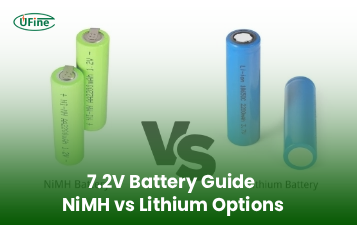
NiMH vs Lithium 7.2V Battery and Charger: Which Is Better?
Compare 7.2V NiMH vs Lithium batteries and chargers in 2025. Learn runtime, weight, charging, lifespan, and cost to choose the best for your device.
How to Choose the Right 7.2V Battery and Charger for Your Device?
Learn how to choose the right 7.2V battery and charger for optimal performance, safety, and longevity across RC, tools, medical, and industrial devices.
Big Square Battery Safety Standards You Must Know
Learn key safety standards for big square batteries to avoid fire risks, shipping delays, and compliance issues in EV, industrial, and energy storage projects.
Big Square Battery Applications in Solar & Industrial Equipment
Big square batteries deliver high capacity, stable output, and long life for solar, industrial, and backup power. Explore key uses and advantages.
Big Square Battery vs Cylindrical Battery: Complete 2025 Guide for EVs, ESS & Industrial Devices
Choosing the right battery is key for designers and engineers. Compare big square vs cylindrical batteries to find the best fit for your application.
